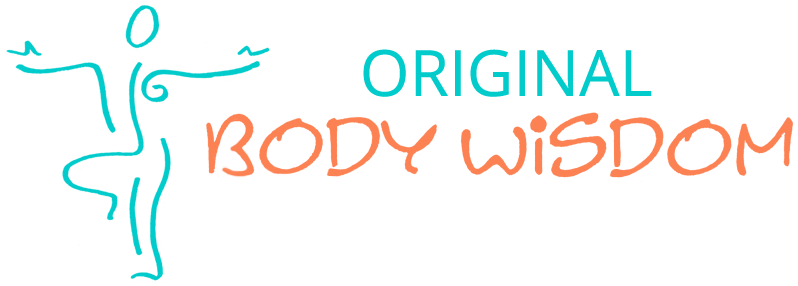Pelvic Floor Healing begins when you understand that pelvic floor problems are not restricted to this one part of your body. Because of that, these 5 Somatic Movement practices can gently and successfully alleviate general body tension, emotional stress, gait or alignment problems that can all prevent you from having a healthy pelvic floor. Really, you are a whole person and a whole body!
It is also crucial to experience the ways your pelvic floor and related tissues actually work. No matter what your pelvic floor concerns might be, something is working. Building upon what works improves how your muscles work, takes strain off of joints and gives you an easier, better posture. You can stand taller!
Somatic Movement Pelvic Floor Practices Are Gentle and Calming
I like to think of these 5 practices as “pre-exercise”. When done with curiosity and ease they bring a balance to the muscular skeletal , fascia and nervous systems that prepare us for exercise. Honestly, they make exercise more enjoyable and yield better results.
So, are you ready? Grab a chair and change into comfortable clothing. Please use self compassion and curiosity with the exercises below. Keep your self from trying to “make” anything happen. As a result, magic happens! If not right away, with time it will. We are uncovering natural processes that may be obscured.

Now for the 5 Somatic Movement practices for a healthy pelvic floor!
1. Connect your breath to your pelvic floor
We all know about deep breathing but did you know the volume of your belly partially goes downward to your pelvic floor as you breath in and releases upwards as you breath out. It a long, string exhale that helps that happen.
Sit comfortably with your hands on your belly.
Focus on your exhalation and make it as long as you can without strain. try humming or making a SSSHHH sound. Can you feel your belly sink inwards on the inhalation? Can you feel your pelvic floor lift a bit?
Good. Now raise your arms overhead as you exhale with your sound. Yhis will lift your ribcage (and therefore your diaphragm). Now there is more room for your abdominal volume to raise upward. Can you feel this is your pelvic floor?
Try moving your arms and ribs to one side as you exhale. This can enhance the experience. Try the other side. Sit with your arms lowered and see if you can feel more “tone” in or awareness of your pelvic floor.
Notes: If you didn’t feel anything in your pelvic floor imagine a little ball in its center. Feel as you exhale the ball is lifted by a string.
2. Experience the relationship between your sit bones and your tail bone.
These bones are essential anchors for your pelvic floor muscles. And, they are meant to move. Do this practice on a chair, preferably with a flat and firm seat.
Sit on the bony protuberances under your gluteal muscles. They have points almost directly underneath you. These are your “sit” bones or ischial tuberosities. Be comfortable as you sit on them. If you need a little wedge so you are not on your tailbone go for it. And feel your tailbone. Its tip is right above your anus.
Tip backwards on your tail bone. If you touch your “sit” bones you can feel them move together. Your lower back will round. If you are doing this gently that is good! Along with your pelvic floor muscles contracting a bit, you are lengthening your lower back and lower back fascia.
Now coms forward on or in front of the sit bones. Feel your tail swing back. Can you touch and feel, imagine or actually experience the widening in your pelvic floor.
Gently move back and forth. Now sit quietly. do you feel a difference in the “tone” of your pelvic floor? That means if it felt droopy does it feel firmer? If it felt tight, does it feel relaxed? has your posture changed?
Note: Feeling changes can be subtle or quite loud. It is always helpful to notice how you feel before and after. It is subjective audit can take time to trust your own internal evaluations.
3. Bending forward and back using the pelvic floor muscles
Again, sit on a firm chair on your sit bones.
Find your groin or “hip crease”. We will be bending from here. This is also sometimes called a hip hinge.
Notice again the distance between your sit bones and tail. Feel it with your hands if you need to.
Imagine your sit bones spreading away from one another as you hinge forward on your hips. Feel your tail move backwards. can you imagine the area int eh back of your pelvic floor lengthening or expanding?
Imagine the sit bones drawing back towards each other like magnets to bring you back to sitting. Feel your tail swing in. Maybe it’s even a long tail!
Do this several times and rest. Notice what feels different.
Notes. You can coordinate your breathing with this so you inhale as you bend and exhale as you straighten. This way the breathing movements of the pelvic floor work with your bending.
4. Muscle expanding and condensing to improve pelvic floor squats.
The truth about muscle is that fibers get more dense or more expanded. They don’t really “tighten” or loosen. So, if when you squat for your pelvic floor and tighten or grip and you stand, try this instead. Also, try a feeling of expanding muscle fibers front to back, side to side and diagonally as you go into the squat. Think your pelvic floor as a sweater that has a wider weave as you go down into the square and a more narrow weave as you raise up.
Stand comfortable with your feet slightly pointed out to the sides. Move into squat but think of your “sweater” expanding. Do you feel your pelvic floor widening in all directions?
Come up and feel the densifying or condensing of the knit.
Do this several times. You can say things like narrowing and widening. Notice if the movement is easier than your usual squat or if you go further. notice the tone of your pelvic floor muscles when you are done.
Notes: One side or one direction may feel easier than another. These are clues about imbalances in your pelvic floor complex and posture. Resources below can help attend to that.
5. Happy Hips, happy pelvic floor
Do you have a foot that turns out? Or do you stand habitually on one leg? Most likely you have an imbalance between your hips and that deeply affects your pelvic floor. One muscle in particular, it’s called the internal obturator, actually provides both a boundary for your pelvic floor AND rotates your hips. its not he only one. There are many muscles in your hips and legs that can support or hard your pelvic floor.
You can do this practice sitting, standing or laying down.
First, walk around the room and see how you feel. Try balancing on one leg and then the other. Is there a difference? Do you notice you favor one leg? Or turn out one foot?
Now, lie on your back with your needs bent. use head support if you need it. Keeping your right foot planted on the floor gently bring your left knee to the side. Please, do not make it a stretch! you spine isn’t shifting. All that is moving is your left leg and pelvis. maybe you shift a little to the outside of the left foot. If you can find the big, bony bulge at the side of your leg up near your groin ( this is sometimes inaccurately referred toes your hip) you can imagine the movement is happening by that bone moving away from and then back towards your left sit bone.
Do this several times. Make it smooth. Doing less is better than doing more so do a lot less than you re capable of.
Stand. walk Is anything different? Easier? changed?
Do the other side. Walk and enjoy. Your hips may indeed be more balanced.
Notes: More is involved than just this one muscle. But take heart- any pain relief or any easier balance are beginnings that can be improved upon!
Want More Somatic Practices for a Healthy Pelvic Floor?
These are just a few exercises to jump start you –I offer in person and Zoom workshops for the pelvic floor as well as one on one sessions.
You can head over ot my Youtube channel for a pelvic floor play list. This also includes tips for incontinence and pelvic floor pain. I also have several free pelvic floor exercises on my media page – scroll down and click on breathing.
